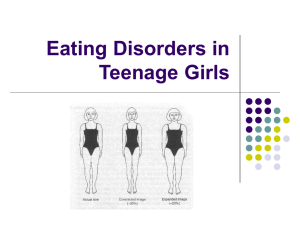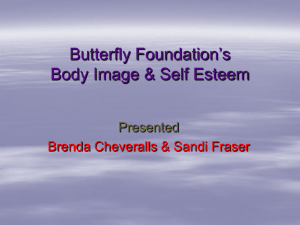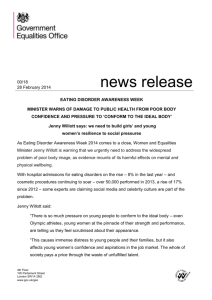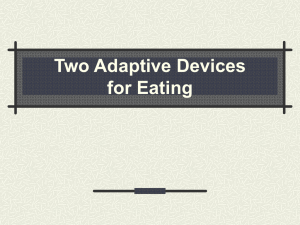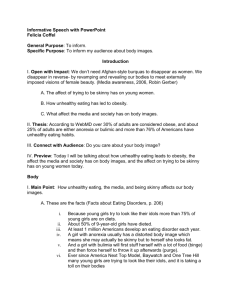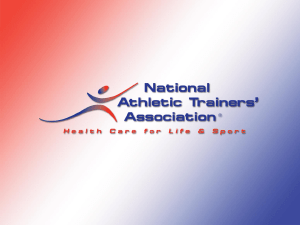Stress and Body Image
advertisement
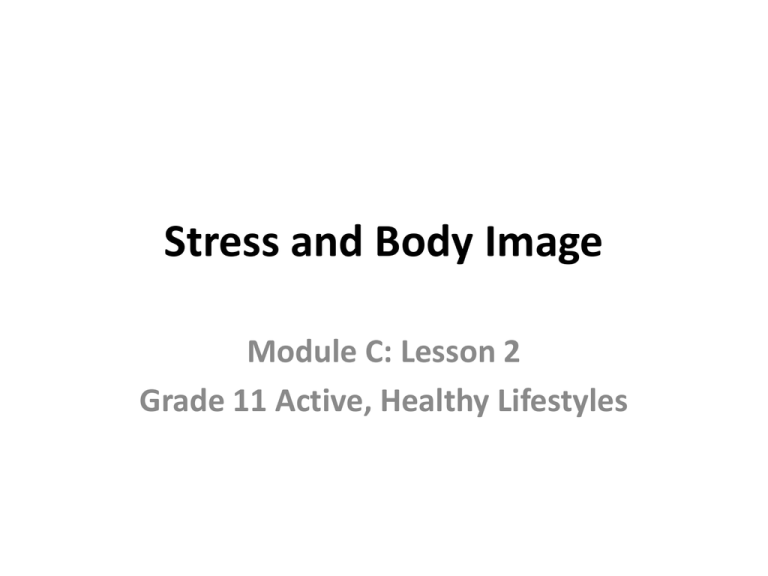
Stress and Body Image Module C: Lesson 2 Grade 11 Active, Healthy Lifestyles Dealing with Stressful Situations • Stress is the body’s normal physiological response to situations or stimuli perceived as “dangerous” to the body • Reactions to stress can vary greatly • Healthy lifestyle choices impact the ability to cope with stress and to manage day-to-day activities Stressful Situations • Identify some feelings and biological changes that stress can cause • “Fight or flight” • Write down responses to the following situations: – – – – – – Situations That Make Me Angry Situations That Make Me Frustrated Situations That Make Me Worry Situations That Make Me Happy Situations That Take a Lot of Time Situations That Take Money • Discuss similarities, insights, or perceptions related to the ideas listed • Positive stressors versus negative stressors. • Identify appropriate and healthy strategies to cope with stressful situations Stress Can Be Positive or Negative • A certain level of stress is not a bad thing and can contribute to optimum performance. – • Excessive levels of stress can hamper performance and enjoyment – – – • what is asked of us is beyond our perceived abilities too much is asked of us in too short a space of time unnecessary obstacles are put in the way of achieving our goals Negative stress – – – – – – – – • • too little stress = difficult to become self-motivated to perform well (boredom and not challenged) gets in the way of good judgement and fine motor control causes competition to be seen as a threat, not a challenge damages the positive frame of mind needed for high-quality competition by promoting negative thinking damaging self-confidence narrowing attention disrupting flow consumes mental energy that could be devoted to focusing on effective technique Negative thinking Exercise is used as a primary stress-management strategy Physiological Responses of Exercise • Investigate the physiological responses of exercise (stress-reducing) Wellness Inventory • Complete the wellness survey • What responses cause concern • How can you improve Body Image • Linked to self-esteem and self-concept • Shaped by past experiences (positive or negative) • Boys and girls • More complex than weight, height or muscle mass • Not individual or optimal body size or weight but how you feel about your body and your life experiences What Is Body Image? • Formed at an early age • Influenced by our parents, caregivers, peers and life experiences • Relates to how you feel about your body and what you think your body look like to others • Perspectives may not be objective • Every body is different • Ideal body weight is the weight that allows us to feel strong and energetic and lets us lead a healthy life Common Body Image Questions • Pick a question for group discussion Canadian Statistics on Eating Disorders • 27% of Ontario girls 12 to 18 years old are engaged in disordered food and weight behaviour • Third most common chronic illness in adolescent girls • Almost one in every two girls and almost one in every five boys in Grade 10 either was on a diet or wanted to lose weight How Big Is the Body Image Problem? • Increases the risk for extreme body/weight control behaviours • Increased preoccupation with appearance and body dissatisfaction • Increased risk for engaging in dangerous practices to control weight and size • Can lead to more harmful behaviours • Increased risk for developing disordered eating or an eating disorder. Positive and Negative Body Image • People with positive body image exhibit • Self-confidence, energy, vitality and positive selfappraisal • Feelings of attractiveness and beauty • Trust and respect for their bodies • Freedom of expression with their bodies, not dependent on weight • People with negative body image describe • Dissatisfaction with their physical appearance • Belief that their appearance is being scrutinized and evaluated by others • Excessive emphasis on physical appearance in how they evaluate themselves • Distressing preoccupation with their bodies • Feelings of shame and/or embarrassment Positive Body Image • Realistic perception of the body • Understand that healthy, attractive bodies come in many shapes and sizes, and that physical appearance says very little about character or value • Assessment of the body is separate from a sense of self-esteem Negative body image • Body dysmorphic disorder • Over-preoccupation with an “imagined” physical defect in appearance • Usually nose, skin, or hair • Anxiety and/or depression • Muscle dysmorphia (bigorexia) • Over-preoccupation with the perception or feeling that one’s muscles are too small or too weak • Spend unrealistic amounts of time working out in the gym, and yet they don’t feel “good enough” What Are Some Factors That Affect Body Image? • Standards set by society and the culture that surrounds us • Comments from family, friends, and others about our bodies, their bodies, and other people’s bodies • Self-esteem (view our bodies and evaluate ourselves) • History of abuse, teasing, life changes, and physical changes that may be a result of puberty, medical problems, surgery or sports injuries • Images of idealized versus normal bodies Eating Disorders • Negative body image and body dissatisfaction increase risk • Anorexia or bulimia nervosa • Perceive themselves as being larger than they actually are • Increase in dieting behaviour – depression, decreased self-confidence, increased feelings of anxiety, feelings of unattractiveness and persistent concern about weight • People with negative body image may – – – – Engage in excessive body checking Camouflage their size and shape with loose and bulky clothing Avoid social situations that trigger physical self-consciousness Avoid exposing their bodies How Do Eating and Body Image Go Together? • Eating disorders are internal conflicts about food and/or body size and shape • Healthy eating behaviours are associated with feeling confident about body shape and size • Disordered eating behaviours are associated with a preoccupation with appearance and an attempt to change body size through a focus on diets Eating disorders • Anorexia nervosa • Fear of weight gain and severe restriction of food intake, which can result in significant weight loss • Bulimia nervosa • Attempt to avoid weight gain or to manage weight through frequent compensation by purging • Binge eating disorder • pattern of binge eating (feeling out of control while eating) without purging • May take a variety of forms (mild to severe) How Can Body Image Affect Personal Health? • How can body image affect personal health? Boosting a Body Image? • What are three ways to boost body image? • How can you change your body type? • If you know people who are always comparing themselves to others in terms of appearance, what could you do or say to help? • How could participating in physical activity contribute to positive body image? Exposure to Mass Media and Weight Concerns • Girls between Grades 5 and 12 – 69% reported that magazine pictures influence their idea of the perfect body shape – 47% reported wanting to lose weight because of magazine pictures – Girls who were frequent readers of fashion magazines were two to three times more likely than infrequent readers • To diet to lose weight because of a magazine article • To exercise to lose weight because of a magazine article • To feel that magazines influence what they believe is the ideal body shape Dove Self-Esteem Fund • Think critically about the media and about how much the media work to influence people of all ages



